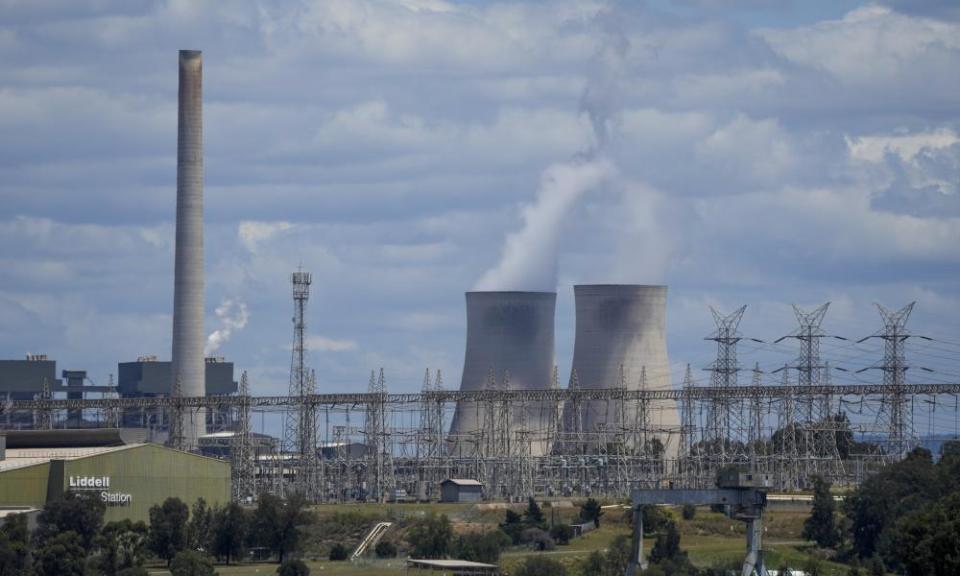Labor appears to be living in either fear or hope over climate policy

With an election looming, Australia’s political parties are missing the main game: it’s policy instruments, not targets, that are pivotal to containing global warming
Labor’s recently announced target to reduce carbon emissions to 43% below 2005 levels will no doubt dominate political and policy discussions leading into the federal election. The Liberal-Nationals coalition will say that would wreck the economy; the Greens will say it shows Labor doesn’t care about climate change.
However, an obsession with the target is probably missing the main game. What brings down emissions are the policy instruments that drive changes in how our power grids, factories, farms and buildings are operated. What history shows is that, if we can get effective policies implemented that give clean energy businesses a window of opportunity to show what they can do, politicians usually come to find that reducing emissions wasn’t nearly as hard as what they originally thought. They then become willing to accept even more ambitious emission reduction efforts.
From 2010 to 2014 we had a horribly acrimonious battle over carbon pricing and the renewable energy target. The major business lobby groups, such as the Business Council of Australia, the Minerals Council and the Australian Petroleum Production and Exploration Association, ripped down much of the policy framework that had been assembled to reduce emissions. While the carbon price was abolished, we managed to retain the renewable energy target. The wind and solar industry subsequently proved all the doubters not just wrong, but left them embarrassed. This has helped change minds to the extent that much of the business community now accepts the need for more ambitious emission reduction efforts.
In spite of tremendous progress in renewable energy and electric vehicles, policy remains pivotal to achieving emission reductions fast enough to contain global warming increases to less than 2C. A few weeks ago I laid out a five-step plan for where Australian climate policy needed to go.
Step one involved placing a requirement on major emitting facilities to reduce emissions in line with what could be achieved by the best available technologies in a given industry. On this point Labor has gone one better. Labor has announced that it will steadily tighten emission limits that already apply to Australia’s major carbon emitters via a policy instituted by former environment minister Greg Hunt – the safeguard mechanism.
Unfortunately, Labor appears to be living in either fear or hope
This policy is effectively an emissions trading scheme lying dormant and could be revived to be an effective and efficient way to reduce emissions. The big question mark though is how emissions-intensive, trade-exposed industries will be treated, because Labor has left open an option for them to be at least partially exempted. If they face little to no kind of emission constraint or incentive, it leaves a huge gaping hole for a large proportion of Australia’s emissions.
Unfortunately, in the other four policy steps I outlined, Labor appears to be living in either fear or hope.
Battery technology and electric vehicles remain too expensive at present to achieve mass uptake. The technology is certainly advancing and costs are coming down. But this is largely because motor vehicle companies know this is their only option if they are to meet ever tightening emission standards in Europe and California. Labor has abandoned its prior commitment to join in the heavy lifting by matching emission standards in place overseas, although its plan to exempt electric vehicles from fringe benefits tax should encourage uptake.
Also, as I explained in RenewEconomy, while Australia is doing well in the rollout of solar, without the rollout of battery technology and greater efforts to move electricity loads such as hot water into the middle of the day, it will stall.
Those renting and unable to afford their own home have so far almost entirely missed out on the benefits of lower energy bills from solar and more energy-efficient appliances and homes. Unfortunately, landlords have mostly proven to be utterly uninterested in taking advantage of government incentives for solar, insulation, or efficient water heaters.
Labor’s proposals for shared or “community” batteries and “solar banks” are tiny tokenistic drops in the ocean that will do little to accelerate battery rollout. Also, due to our network regulatory framework, they won’t actually save renters much money from solar either.
Growth in renewable energy will also depend on new transmission infrastructure to transport power to where it is needed. Here Labor has its Rewiring the Nation $20bn loans program. Yet financial markets are falling over themselves to fund these types of monopoly infrastructure assets with regulated rates of return. The choke point here isn’t finance, it’s regulators. Regulators need to be given crystal-clear riding instructions that they need to completely decarbonise electricity pronto.
While Labor’s commitment to tighten the safeguard mechanism should be praised, achieving its 2030 targets largely hinges on decarbonising electricity and motor vehicles where its policy cupboard looks a little bare.
• Tristan Edis is the director of analysis and advisory at Green Energy Markets

 Yahoo Finance
Yahoo Finance 